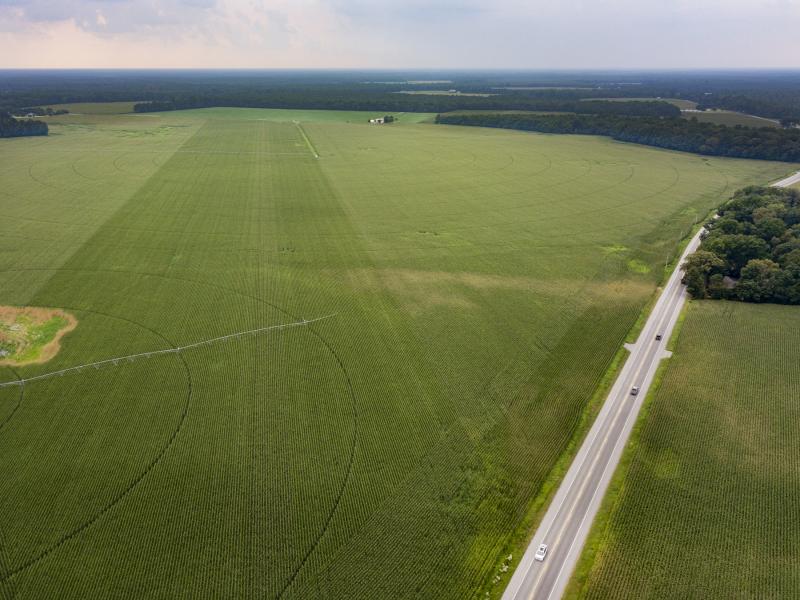The Granary asks for special development district designation

The developers of the Granary at Draper Farm project in Milton have asked the town council for classification as a special development district, a special tax designation that would help pay for infrastructure related to the development.
A special development district is a mechanism by which Granary property owners would pay a levy on top of their property tax that will go toward paying for public infrastructure needed to serve the development. The special tax would eventually expire and would likely be between $1,000 and $2,000 per home annually.
At the council's July 25 meeting, Colby Cox, founder of developer Convergence Communities, said, “We’re not reinventing the wheel here. It’s been done before in Sussex County.”
The Granary is a planned 1,350-unit development on a 450-acre parcel on Sand Hill Road. While tax revenue is one of the town’s biggest benefits from the Granary development, Cox said other benefits for Milton include 110 acres of open space that will be dedicated to the town, including 55 acres of park land. The development will also have a walking trail that will be connected to the town’s rails-to-trails path via an underground tunnel that would be built by Convergence.
For the Granary, one of the benefits of being annexed into Milton is that it comes under the auspices of Milton fire, police, water and street maintenance; sewer will be handled by Artesian and electricity will be provided to the development by Delaware Electric Cooperative. However, for the town to provide those services, it must meet certain infrastructure needs. The town has estimated it will need to hire six people each in the public works and police departments over the Granary’s 20-year development time frame, along with vehicles. The town’s projections have shown tax revenue benefits from annexing the parcel outweigh expenses over the development period. Cox said that is where the special development district designation comes in.
Under a special development district, the town would issue bonds, with the proceeds covering those costs. The town would then be paid back through the additional tax. This does not include infrastructure such as roads or water and sewer hookups, which are the direct responsibility of the developer.
Cox said of the special development district designation, “The timing of all this infrastructure can accelerate significantly under an SDD program. It can offset a tremendous amount of costs.”
Besides costs of infrastructure related to the Granary development, Cox said he would also like to see some of that money go to off-site improvements around Milton.
“It’s kind of a moving target, but I think the intention is to create a kind of bucket of money that would come out of these bond proceeds over the years that would then be used by the town for town public infrastructure,” he said.
John Stalfort of Easton, Md.-based law firm Miles and Stockbridge said the tax is incremental and is on new development, so it will not affect existing property owners. He said there are special development districts in Millsboro and Bridgeville, where money raised through those districts has been used to finance off-site improvements that benefit the whole town.
“This provides a secure source of funding so you can be assured that those improvements are going to get built,” Stalfort said.
He said the downsides to an SDD are the bonds the town will need to sell, time from town staff, the cost of administering SDD and calls from homeowners who bought their homes not aware they are in an SDD. Stalfort said there would be a third-party administrator to the district that could handle complaints and disputes.
Stalfort said the next step will be the creation of the district itself, which he proposed to bring to council at its Monday, Sept. 12 meeting. He said just creating the district does not obligate the town to do anything further, but opens the door to Convergence and town officials to come together and hash out the details.
“There’s a whole lot of work to be done before bonds can be issued,” Stalfort said.
Mayor John Collier said the next step will be crafting a resolution designating the district. Stalfort said Convergence will be working through August to make sure documents are ready for the town to proceed by council’s September meeting.
In addition, the Granary’s proposed master plan was sent to the planning and zoning commission by a unanimous vote at council’s Aug. 1 meeting. The planners will compile and eventually present an advisory report on whether to approve the master plan for the development. Planning and zoning has not yet begun holding meetings on that report, with the soonest that discussions can begin being at the commission’s Tuesday, Aug. 16 meeting.
Ryan Mavity covers Milton and the court system. He is married to Rachel Swick Mavity and has two kids, Alex and Jane. Ryan started with the Cape Gazette all the way back in February 2007, previously covering the City of Rehoboth Beach. A native of Easton, Md. and graduate of Towson University, Ryan enjoys watching the Baltimore Ravens, Washington Capitals and Baltimore Orioles in his spare time.






















































